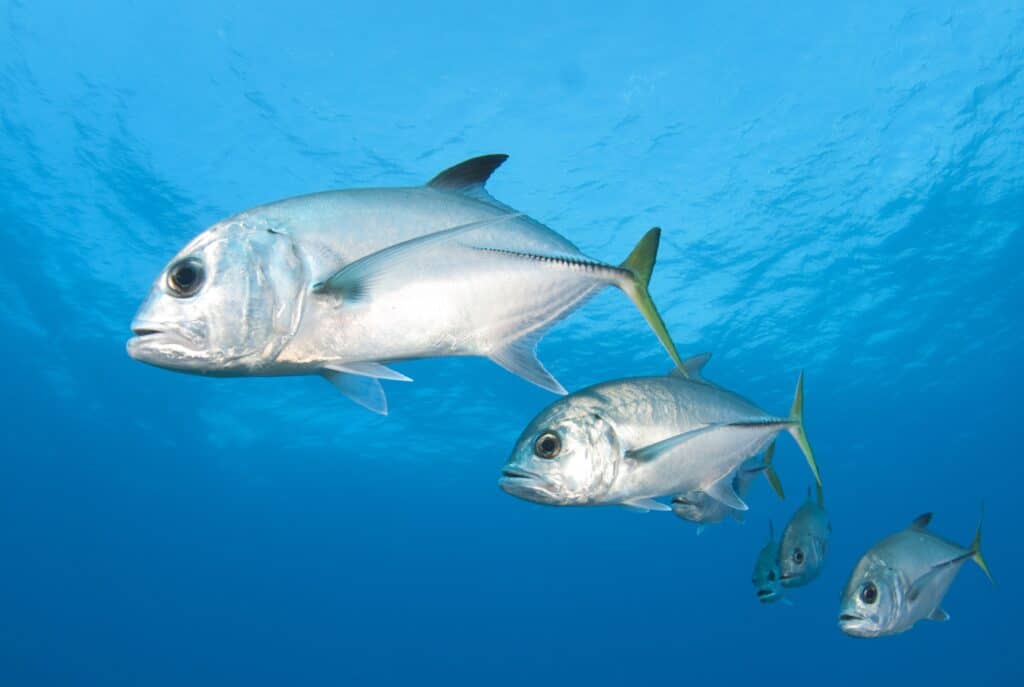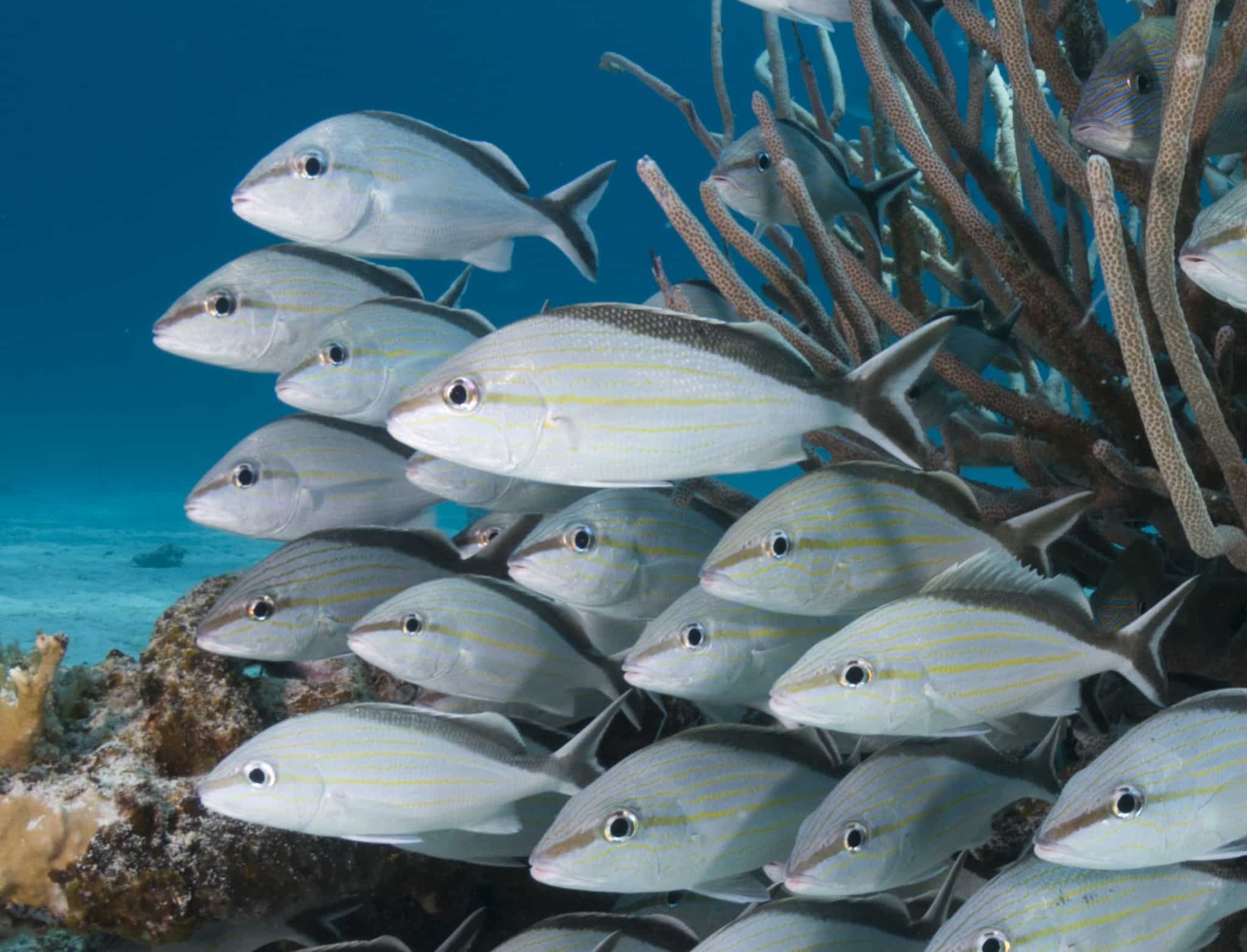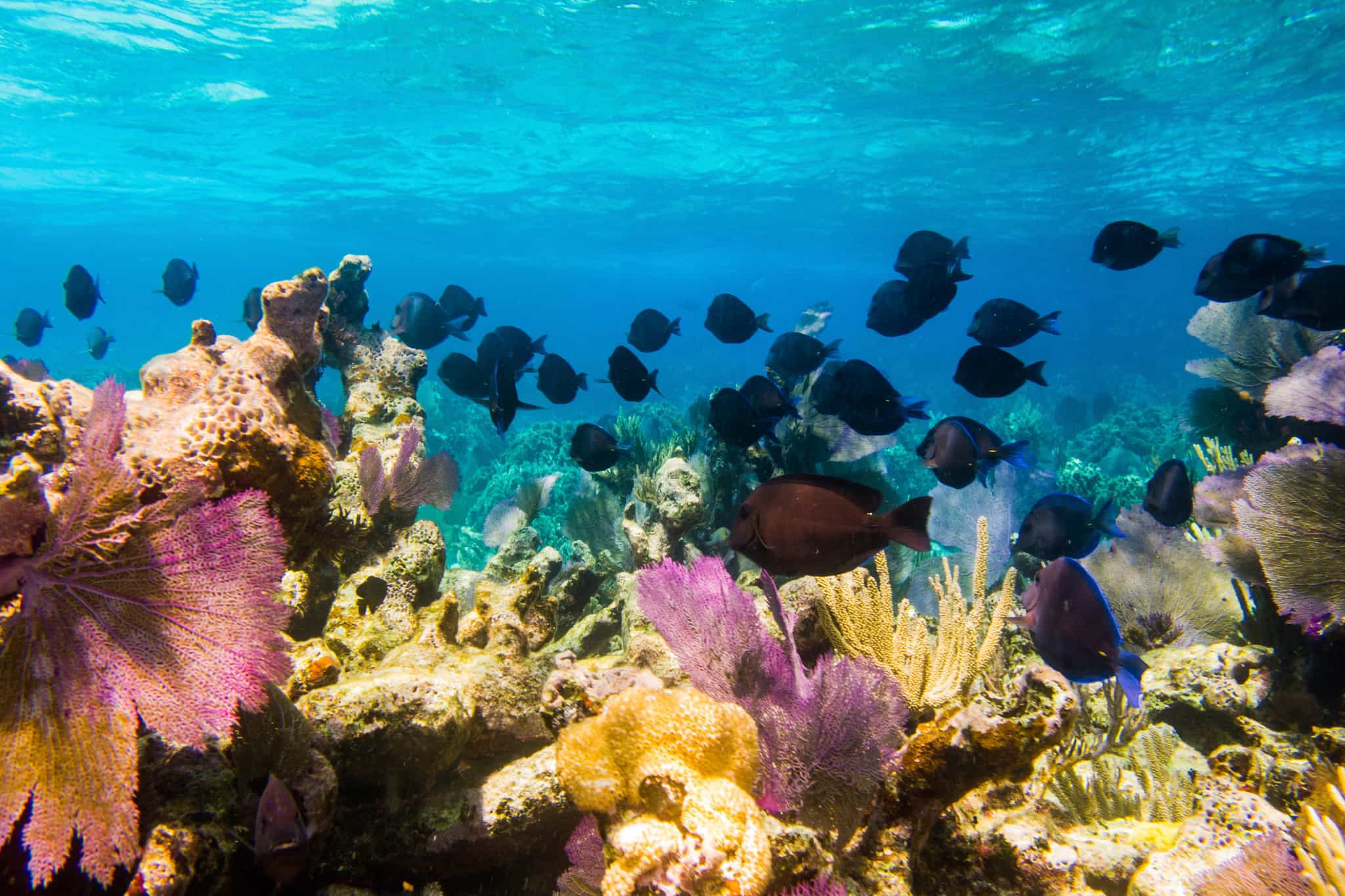What was that fish? More than 500 species of finned creatures live in the waters of the tropical Atlantic and Caribbean Sea. While you may not see them all on your next Caribbean snorkeling vacation, some of these fish are regulars on the reefs and easy to spot. Here’s a quick look at 10 of the fish you are most likely to find swimming about or tucked in rock and coral crevices when you put your head under.
French Angelfish
There are actually five species of angelfish in the Caribbean, but the one that’s considered to be the darling of the reef is the French angel. They are identifiable by their black background coloration, which sets off scales rimmed with golden yellow. If you see a similarly shaped fish that’s black with vertical yellow bands, it might be a juvenile, because French angelfish change coloration when they reach maturity. They are monogamous and will often stay together until death. The fish are commonly seen swimming about in pairs and picking at sponges, which constitute about 70 percent of their diet.
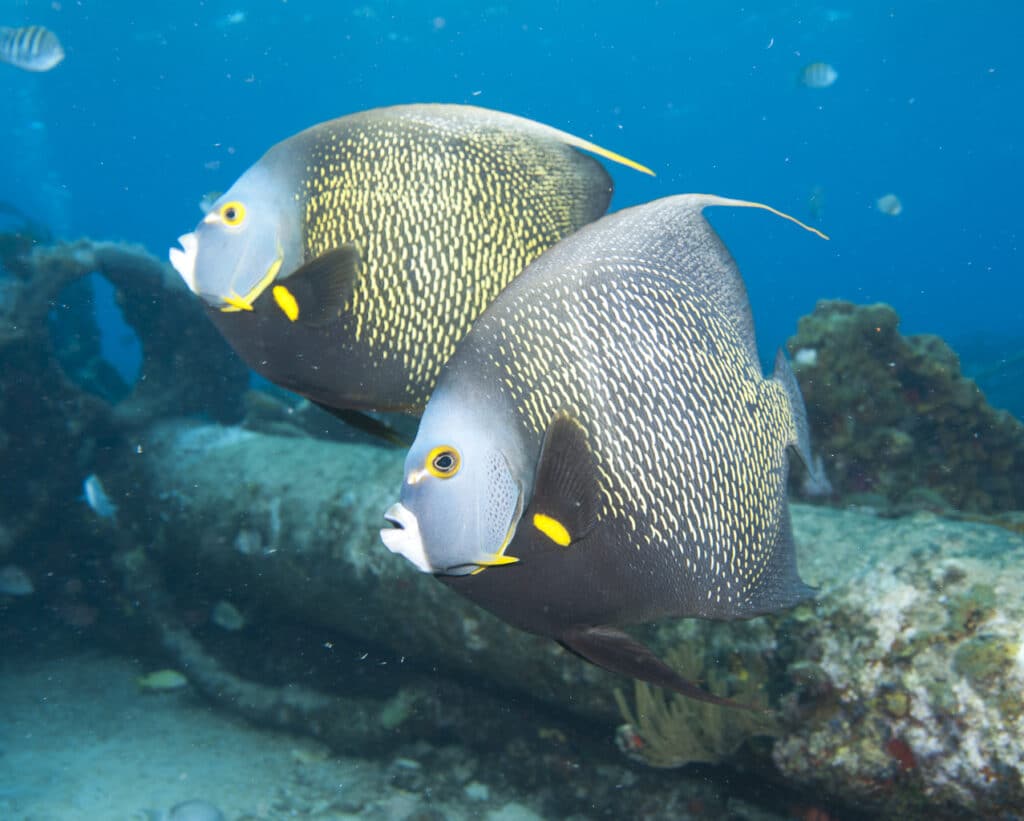
Lionfish
There is no disputing the beauty of the red lionfish with its brightly striped body and frilly supersize fins resembling feathers. A species originally native to the Indo-Pacific, the fish found its way to the tropical Atlantic through the aquarium trade and has since become an invasive species throughout the Caribbean, Bahamas and the East Coast of the United States. As a result, it is now one of the most common fish you are likely to see when diving or snorkeling. The best policy is look but don’t touch, as lionfish are equipped with long, needle-sharp spines that are highly venomous.
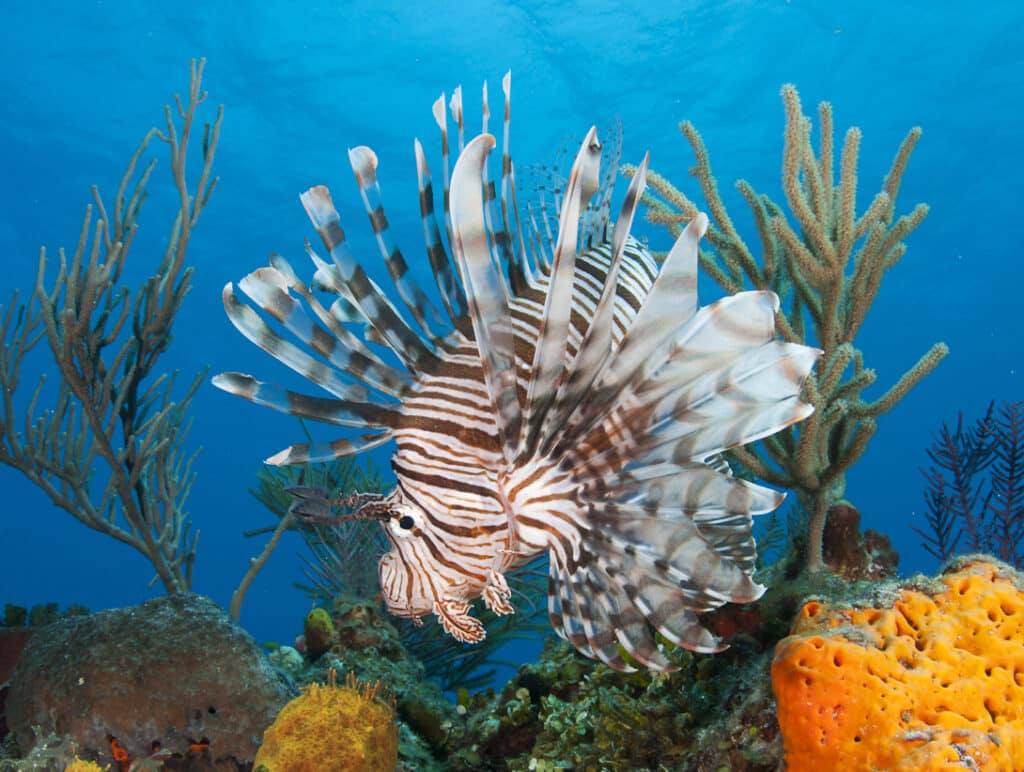
Coney
One of the cutest, yet often misidentified, members of the grouper family is the coney. They are quite common in shallow water and seldom shy. The confusing part is that they can have several color variants. The more common is an all-white body with a chocolate-color hood, but they can also be reddish brown with many small blue spots. Another less common color phase is yellow with the same tiny blue spots, which give the fish its second name: the golden hind. Coneys are very territorial, feeding mainly on small fish and crustaceans. They will sometimes follow moray eels that are out hunting for food.
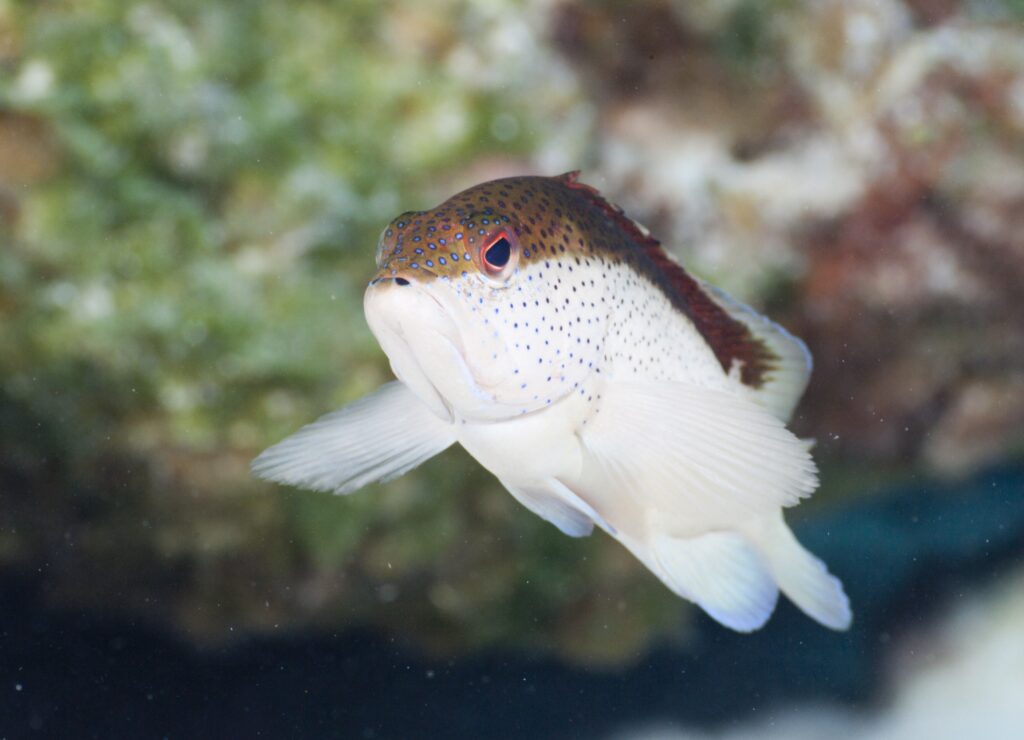
Spotted Moray Eel
There is no mistaking a moray eel when you see one with its head protruding, mouth open in seeming menace, from a lair in the reef or wreck. Actually, the eel is just flexing its jaws to pump water through its gills. The most common is the spotted moray, a medium size member of the moray clan that seldom grows longer than 3 feet in length. They are typically solitary by nature, spending most of the day peering from the safety of a hole with only the head protruding. At night, they become more active, roaming the reef in search of small crustaceans and fish.
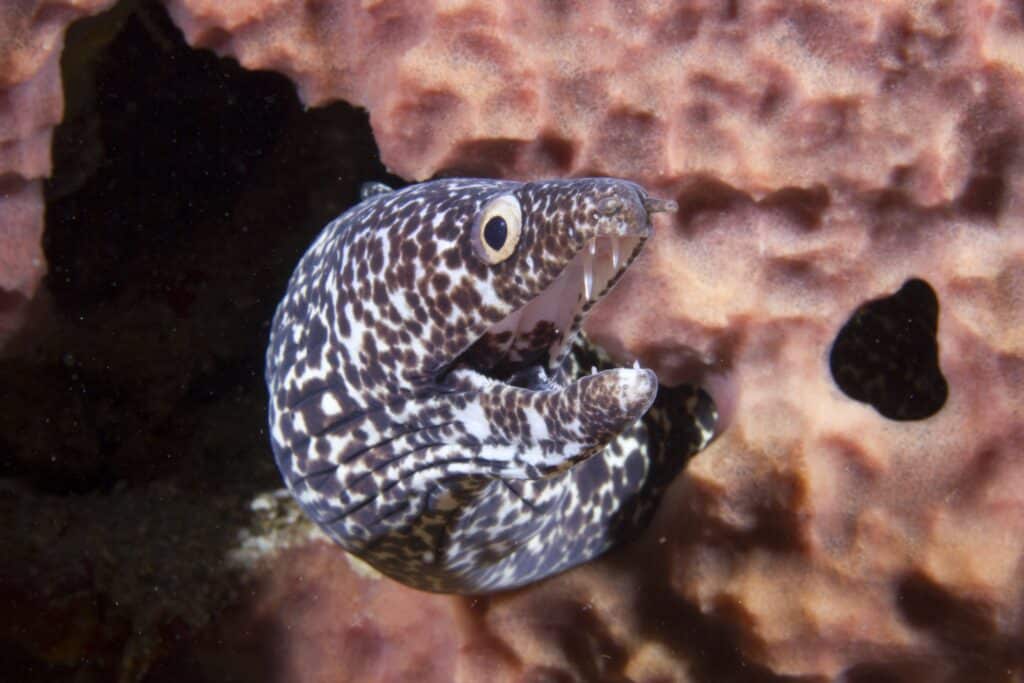
Creole Wrasse
Measuring just 4 to 8 inches in length and sporting deep purple-blue coloration, the Creole wrasse is perhaps the most abundant member and widely distributed of the Caribbean wrasses. A single school can number well into the high hundreds, and they look like a dark blue cloud as they move through the water column feeding on plankton. A common sighting on Caribbean reefs, these fast swimmers are an indication of a healthy reef. The Creole wrasse is most active by day, when they always move as groups to create safety in numbers while swimming above coral reefs. At night they scatter and retreat alone to rocky crevices in the reef to sleep.
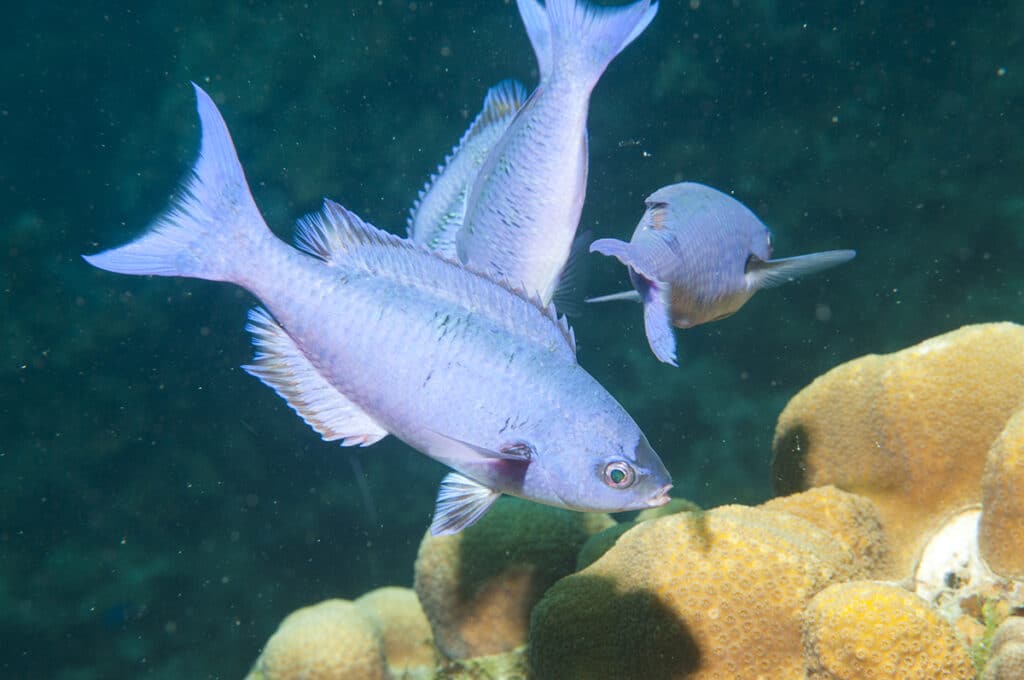
White-Spotted Filefish
The white-spotted filefish takes its name from the rough, sandpaper-like skin that covers its flattened, elongated body. Island lore claims the dried skin of these fish was once used to sand wooden boats. You may find them finning slowly around clumps of seaweed or above corals, which they sometimes nibble on with their sharp incisor teeth at the front of their snout-like mouths. When startled, they can turn their entire body black in a matter of seconds, a camouflage that enables their survival in a competitive underwater world. They have a sharp spine at the top of their head, which can be raised to deter would-be predators from munching down.
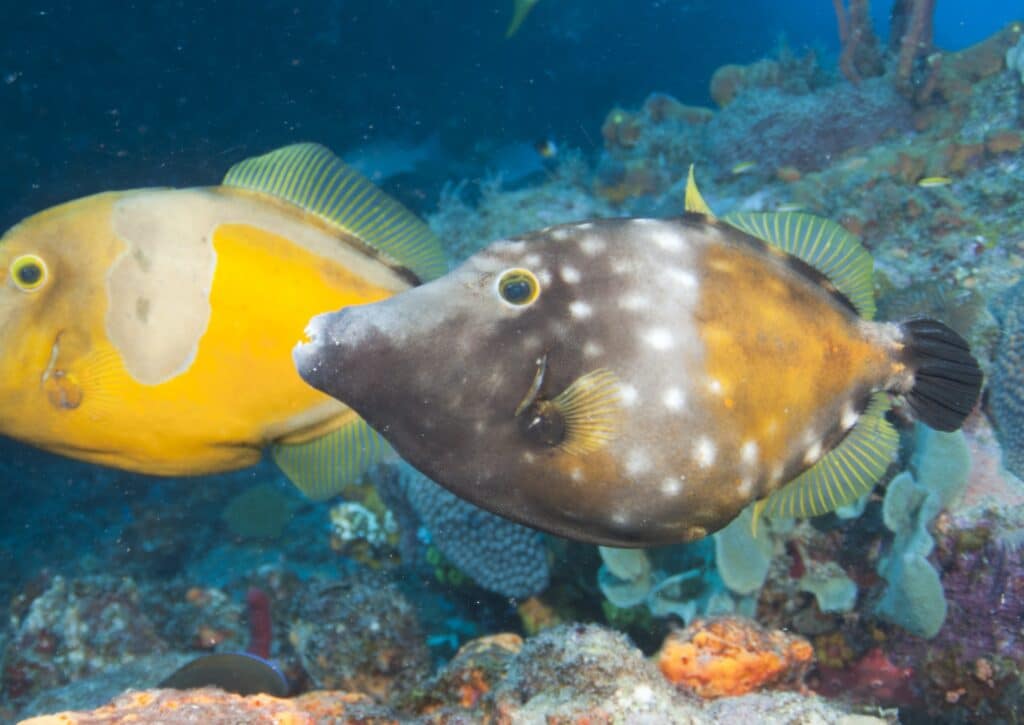
Queen Triggerfish
Adorned in distinctive bands of blue, purple, turquoise and green the queen triggerfish is one of the most regal residents of the reef. They are often found roaming coral and rocky bottoms looking for invertebrates, notably sea urchins, which they crack open with the large incisor teeth in the front of their snout-like mouths. Triggers take their name from a unique defense mechanism. Their two forward dorsal fins have evolved into a pair of spikes. These remain retracted most of the time, but when a threat arises, they spring upward and lock into place with a trigger-like mechanism that deters would-be predators from attacking.
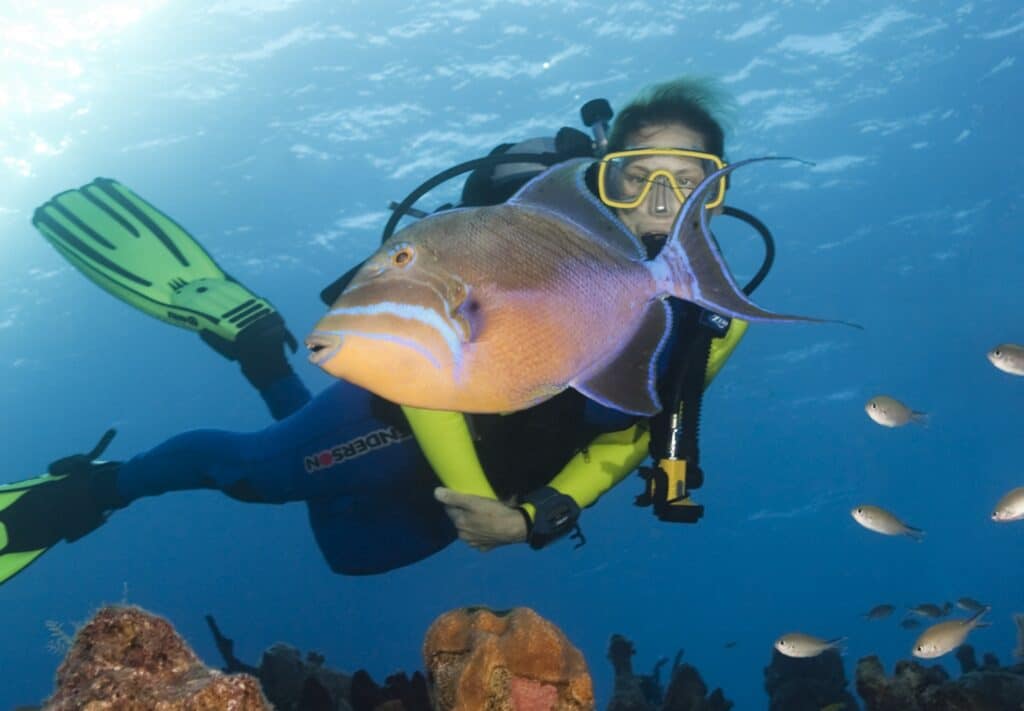
Cottonwick Grunts
When you encounter a school of fish hovering near a reef in a closely spaced school, they are most likely grunts. Among the more common is the cottonwick, also called the blacktail grunt. The name comes from the grunting sound they make by rubbing the flat plates of their teeth together—a sound that is amplified by the swim bladder. Grunts become more active at night, when the schools break apart to hunt for small fish and crustaceans. These fish are closely related to snappers, but are not as tasty a table fare, so they are often left alone for snorkelers and divers to enjoy.

Goatfish
It’s easy to see how the goatfish gets its name. The distinctive pair of whiskers that protrude from their chins are known as chemosensory barbels, and they help these bottom feeders locate food as they riffle through sediment in search of anything edible (like goats do). Small worms, crustaceans, mollusks and other small invertebrates are a large part of their staple diet. In the Caribbean, you are likely to see either the spotted or the yellow goatfish. The yellow goatfish is recognizable by its all-white body with a large single yellow stripe. By day, when they are not feeding, they can form large aggregations.
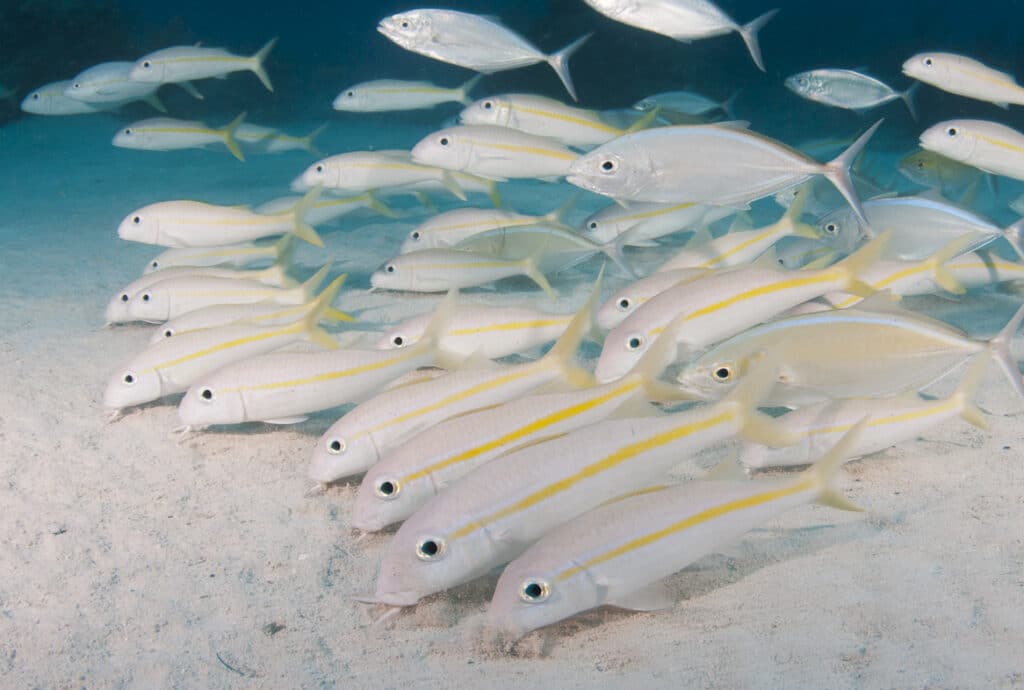
Horse-Eye Jack
Considered a game fish with minor commercial value, the horse-eye is one of the larger members of the jack family, reaching lengths of 2 feet. They are easily recognized by their smooth, reflective silver skin and large horse-like eyes, but they will sometimes mix in with other schooling fish such as crevalle or wrasses. They range into open water, but also make appearances over reefs from time to time—especially those close to open water. While they are generally wary of humans and may move slowly away as snorkelers approach, large schools will sometimes form a giant donut-shaped formation around a swimmer or diver.
